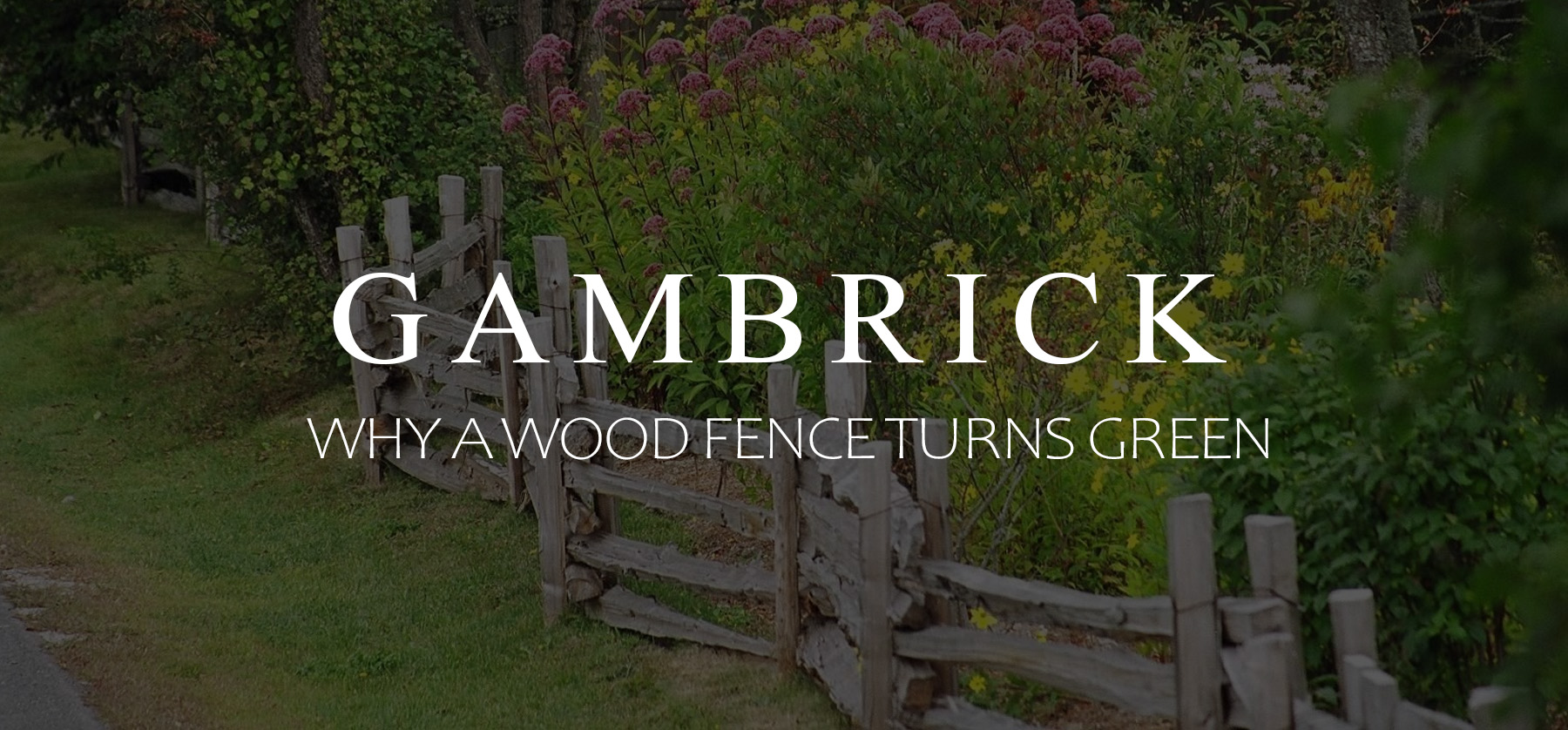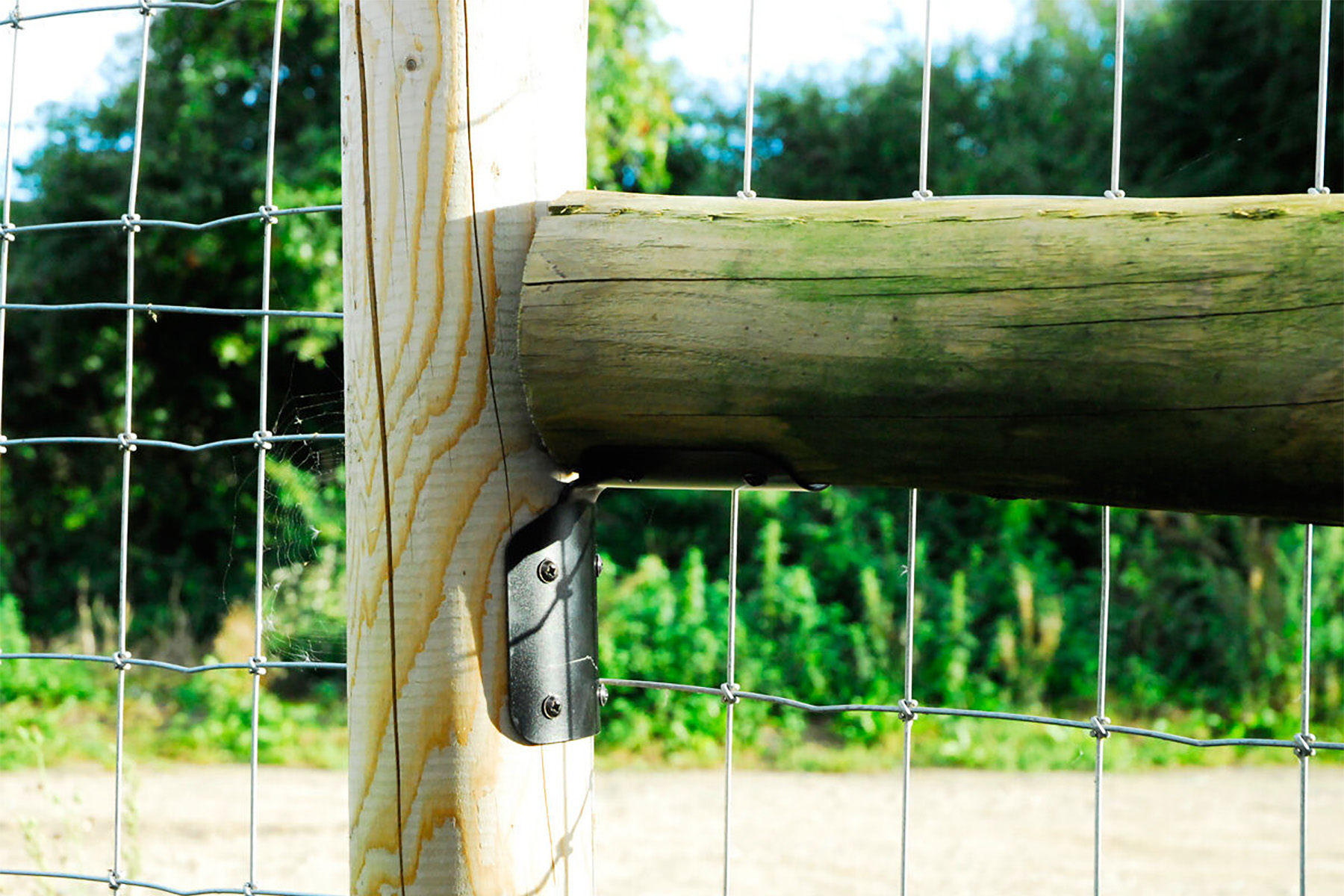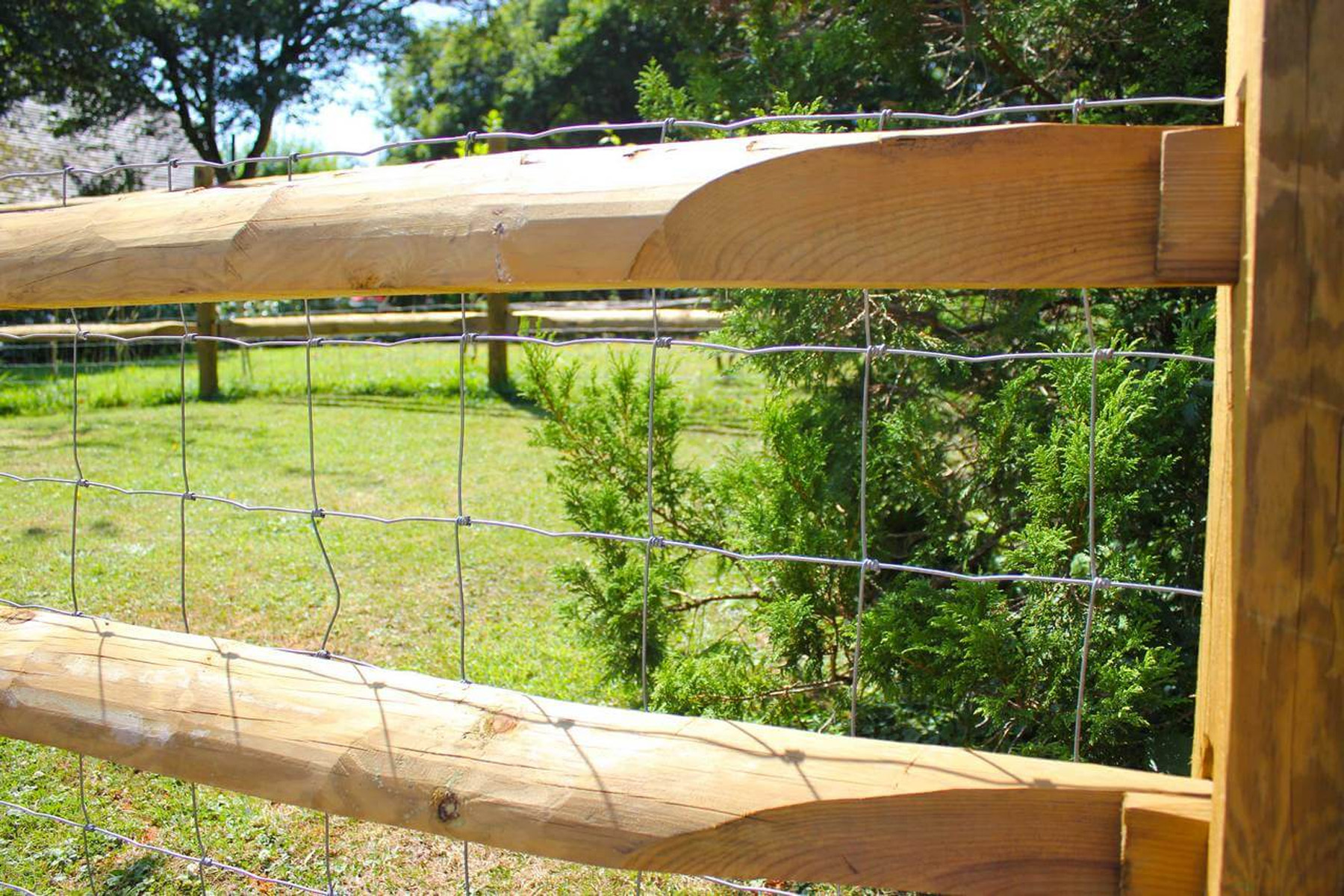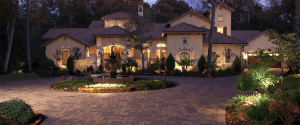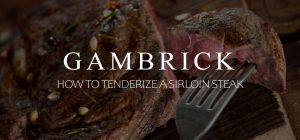Why A Wood Fence Turns Green
Wooden fences are a classic design that’s been around for centuries. They look great, are easy to build yourself and don’t cost as much as metal or vinyl. When a wood fence is newly built and in good shape I think it’s the most beautiful of all the fencing materials. Wood adds warmth and color to a home that fake man made materials can’t match. And when a wood fence gets really old they can actually be quite charming. Like those old picket fences on a farm house. But one problem they face is green algae, mold and mildew. A wood fence turns green because it’s an organic material. When moisture penetrates into the wood and doesn’t dry out, it can start to grow all sorts of micro-organisms.
Green algae, mold, or mildew can grow on a wood fence which causes it to turn green. The wood can retain water, which allows micro-organisms a place to grow. This is especially a problem if the fence is in a damp dark area. Wood fences that get lots of sunlight or are in a dry climate don’t usually have this problem because they dry out quickly and sunlight kills the organisms before they can become a problem.
The best way to prevent a wood fence from turning green is with a sealant, treatment or paint. These treatments can help prevent micro-organisms from growing inside the wood’s pores. If the wood has already turned green, you can fix it by power washing, scrubbing, or sanding and priming the effected areas. Once all the green is gone, consider painting, treating or sealing the fence.
No one wants a green g=fence, but luckily there are some easy ways to fix and prevent it. Keep reading and we’ll tell you how.
Why Is My Fence Turning Green?
There are a few reasons why a wood fence can be turning green. All of them are micro-organisms that feed off the organic material in the wood. When wood retains water inside it’s pores, it creates a place for the organisms to grow. Usually this happens in dark moist areas that don’t get much sun or in damp or humid climates.
In hot or dry climates, the wood dries quickly so moisture doesn’t get retained inside the wood. Without moisture, the organisms can’t start growing.
If the mold, mildew or algae is on a fence right next to the house it’s a bigger problem. Organisms that start growing on the fence can work themselves onto and into the house.
The following are the three main causes:
- Green Algae
- Mold
- Mildew
Green Algae
Green algae is a fungus that grows on moist, shaded surfaces and is generally considered safe. It’s difficult to avoid if you live in a damp or humid climate or get lots of rain. If the wood can’t dry out quickly or retains water, algae can grow. And it spreads quickly.
When you see algae starting to grow on a fence clean it up quickly. Once it’s allowed to take hold and spread you’re entire fence could be green in a matter of weeks.
Fortunately, the presence of green algae doesn’t actually damage the fence. It’s a cosmetic issue that’s fairly easy to clean. However, prevention can be harder if you live in an area that makes it easy for algae to grow. Once you clean the algae, if conditions remain the same, it’ll grow right back again.
Mold
Mold is more difficult to kill than green algae. It’s a fungus, but the germs it produces can harm the wood if left untreated for too long.
Mold grows when water is trapped inside the wood with organic material. It’s tough to prevent if conditions are right and you live in an area prone to mold growth. Be careful around dark areas of the fence that get damp and can’t dry out. This is where mold will start to grow.
If mold is found, it should be killed as soon as possible to avoid further harm. Mold spreads quickly. Usually we find it along the base of a fence where it’s hard for sunlight to hit. Mold can also grow quickly if you have plants right up against the fence. The plants provide shade and moisture.
One of the worst things you can do is to plant right up against a wood fence. If whatever you plant needs watering, you’ll be providing moisture to the mold right where it wants to grow.
Mildew
Mold and mildew are essentially the same thing. However mildew is milder and generally won’t damage the wood.
It’s not as harmless as green algae, and it won’t harm your home as much as mold. But it should still be killed right away.
How Do I Get Rid Of Green Algae On A Fence?
There are a few simple techniques to get rid of green on your fence, all of which should be done as soon as possible.
The first methods we’ll discuss are ways to clean the green off the fence. Cleanings like scrubbing with a brush or power washing are cosmetic fixes. They won’t fix damage done to the fence by mold and they won’t prevent future growth or greening.
I approach a green fence in several ways. First, I clean the green off the fence as best i can. Then I use methods to prevent future growth. That’s why we’ll discuss the best ways to clean the fence first. Then we’ll talk about prevention.
To get rid of green algae on a fence, mix two parts warm water and one part household bleach into a bucket. After you’re done, take your scrub brush and dip it into the bucket with the cleaning solution. Scrub the fence to remove algae. Pay more attention to areas with deep green because it’s penetrated into the wood. Make sure to wear safety equipment like goggles and gloves when working with bleach.
If bleach isn’t enough, try a commercial cleanser. they contain harsh chemicals which are designed to kill mold, mildew and algae.
In most cases, algae is a surface level problem which is fairly easy to clean off. But once the fence is clean, you should stain, seal or paint it to prevent future growth.
Power Wash
Whatever the cause of a wood fence turning green, a good power wash should temporarily solve the problem.
Power washing is a great way to wash away the organisms from the surface of the wood. However, it’s not a long term solution. It’s like washing a car, it looks great for a while but gets dirty again. If conditions haven’t changed, the organisms can start growing again.
If the mold and mildew hasn’t caused any structural damage to the wood, a power washing will work. But power cleaning won’t help if the wood is damaged, corroded, or falling apart. It’s just a cosmetic cleaning but won’t repair wood damage
If you’re going to use a power washer, make sure to use bleach or an anti-bacterial soap. Water alone won’t kill all the spores growing in and on the wood. I prefer anti-bacterial soap because it’s milder, but bleach works better. Try the soap first, if it doesn’t kill all the spores, use bleach.
To protect your plants and grass from the bleach solution, cover them with tarps or plastic covers before washing your fence.
I use power washing to clean the fence along with more preventative measures which we’ll discuss later. A combination of treatments generally works best at cleaning and preventing a green fence.
If you don’t want to use bleach on your fence, there are cleaners and chemicals designed to kill micro-organisms. I prefer to use milder more natural cleaners, but store bought cleansers work really well.
Wear protective gear when working with bleach, cleansers or using a power washer.
Scrub Brush
If you don’t have access to a power washer then try a scrub brush instead.
A scrub brush is a milder cleaning compared to a power washer so it’s better for older or damaged fences.
Adjust the stiffness of the brush to the condition of the fence. If your fence is old and brittle, use a soft brush. however, for new hard wood I use a stuff brush.
Avoid using regular kitchen sponges. They’re not as effective and generally fall apart from the wood grain. Sponge fibers can get tangled in the wood grain which rips it apart after only a few minutes. However those sponges with a scrub pad on the back work OK.
Use a bleach solution or anti-bacterial soap with this cleaning procedure, just like you would with a power washer. Again, soap is milder but worth a try first. If it doesn’t kill all the spores use bleach.
Bleach is harsh, so I use it as a last resort.
Before using bleach solution in the yard, make sure to take precautions like covering plants and bushes with a tarp.
If you don’t want to use bleach on your fence, there are cleaners and chemicals designed to kill micro-organisms. I prefer to use milder more natural cleaners, but store bought cleansers work really well.
Just like a power washing, scrubbing is a cosmetic cleaning. It won’t fix damage done to the fence. And it’s not a long term fix. If conditions remain the same the organisms will probably come back.
Wear protective gear when working with bleach or cleansers.
How To Prevent A Wood Fence From Turning Green
Now that that green fence is clean, or if you’re starting from a new fence, let’s talk about prevention.
There are a few methods that work really well at preventing a fence from turning green.
Sand, Repair and Seal The Fence
Sanding the fence is a good way to remove spores you may have missed with the cleaning. It reduces surface grit by making the wood smooth. The smoother the surface, the harder it is for mold to grow. This is why extremely dense wood like Ipe grows less mold when compared to soft woods like pine.
I recommend using an electric palm sander or a belt sander rather than doing it by hand. You don’t have to sand the entire fence, stick to areas that are rough or have had mold. Use a hard grit the first pass and then a medium to fine grit.
Sanding will help smooth the wood and cut down on grit but it won’t repair wood damage. If you’ve got large knots or cuts in the wood, consider filling them with an exterior grade wood filler. Fill the wood with material and then sand it smooth once it dries.
Concentrate your repairs on the areas where mold typically grows, like the bottom of the fence where it’s dark and moist.
After you’re done sanding, wipe the wood down or spray it with a hose. You don’t want to prime over sanding dust because it will clump in the sealer. Apply sealant to the wood with either a brush, roller or sprayer.
A sealer penetrates into the wood’s pores so water can’t. This helps prevent mold growth because organic material and water won’t be able to get inside the pores.
Before you seal a wood fence, remove all algae, mold, and mildew. If any remain, they’ll continue to grow under the sealing agent which could eventually cause more damage.
Repairs, sanding and staining works best on fences that aren’t too old. If you’ve got a really old wood fence with lots of pits and cracks, these methods won’t help much. You’d be better off using a primer and paint.
Paint & Prime
Priming and painting the fence boards is a great way to prevent the fence from turning green. And it works well even on old and damaged fences. A primer and paint are much thicker than a sealer so they can penetrate deep into the wood. If you use the right products, no moisture will be able to penetrate into the wood once you’re done.
I recommend filling damaged ares of the fence that are prone to mold growth with a filler. Once the filler is dry, sand the area smooth and wipe it down with a damp cloth. Paint is a great sealer, but if you’ve got large damaged areas or big cracks, water may still be able to get in.
Make sure you use exterior paint and primer that’s designed for wood.
Paint has a tendency to peel and flake off over time which creates areas where water can penetrate. Once you paint a wood fence, plan on re-painting it every few years as needed.
Paint and primer are great options for an older fence. If a fence is really old with lots of pits and cracks, stains and sealers won’t help much. They’re better options for newer fences still in good condition. Once a fence gets old you need something more extreme to seal it.
Apply the paint and primer with a brush, roller or sprayer. Even when I roll or spray the fence I still go over it again with a brush. Some times there can be cracks and gaps that roller or sprayer can’t get product into.
If you find an area where you can’t get product into no matter what you try, fill and sand it. Then re-paint.
Stain & Seal
If you prefer the look of natural wood, choose stain instead of paint. Staining isn’t as thick as paint so you can still see the wood’s natural grain and colors.
Stain works best on newer wood that’s smooth. If the wood has lots of pits, cracks and holes, you’ll have to fill these areas before you stain. if you don’t, water can get in and start growing mold.
Sealing and staining seals the wood fibers which makes it extremely difficult for water to penetrate into the boards. Because stain is absorbed into the wood rather being applied as a layer on top, it lasts longer. However it doesn’t last forever. Unlike paint which you can see fading, chipping or flaking, you can’t see it when stain and sealers stops working as well. So get in the habit of reapplying it every so often.
I generally re-stain and seal my fence every 3 or 4 years.
I recommend staining first and then sealing. A sealer prevents moisture from penetrating into the wood which will also block the stain. So stain first, let it soak in, and then apply a sealer.
There are special water-resistant stains available which eliminate the need for a sealer. But I prefer using a stain and then a sealer. They’ve always worked better for me and last longer. Also, once the process is done all you need to do is re-seal the fence. You don;t have to stain it over and over again because the stain stays protected by the sealer.
Like other methods, a stain and sealer isn’t 100% protection against greening. But it makes it much less likely to occur.
Landscaping
Believe it or not, many people are causing their fence to turn green with their landscape design.
Planting shrubs, flowers, bushes or trees right next to a wood fence can cause green growth. This is because plants need watering, attract and absorb moisture and provide shade. All of these conditions are great for mold, mildew and algae growth.
Air flow is another big problem. Fresh air running across the fence will help dry it out which prevents greening. By planting right next to the fence you can block fresh air from circulating around the wood. This makes it harder for the fence to dry out which promotes growth.
Pay attention to where you plant in relation to a wood fence or other wood products like decks. You could be creating a future green problem.
Poor drainage is another issue that can be caused by landscaping. If you’re building up the ground with mulch and planter beds, pay attention to where water is draining. You may be causing the water to pool at a fence post which can cause more growth. Always slope water away from the fence and not into it.
Try not to bury the fence or posts under landscaping dirt or mulch. This puts moist rich soil right up against the wood. Not only can this cause rot, but it also provides a place where green can grow.
Choosing The Right Fence Wood
If you’re build a new fence and want to avoid that greenish discoloration some fences get, then choose a wood that’s naturally resistant to mold,mildew and algae growth.
Below we’ll list a few good options:
Pressure Treated Fencing
Pressure-treated wood is designed for outdoor applications, such as decks and fences.
You can’t pressure treat wood yourself, you need to buy it with the treatment already on because it’s done at a factory. The wood is subjected to a series of pressure treatments that embed water and preservation chemicals deep within the wood. The preservatives remain inside the wood once the water evaporates. The entire process usually takes a few weeks.
A pressure treatment maintains the wood’s integrity, keeps termites and pests at away, and aids the wood’s resistance to water retention and damage.
One thing you’ll notice about pressure treated wood is that it has a greenish color. That’s the chemicals they put into the wood. I don’t love the color but it works and tends to fade a bit over time.
Although pressure treated wood resists mold and mildew growth, it’s still possible. I’ve seen plenty of moldy pressure treated decks and fences in my 20+ year career as a home builder. But it’s much better than untreated wood and easier to clean the mold off. Generally, any mold that you see is surface level because it can’t grow easily inside the wood where the chemicals are.
Heat Treated Fencing
Heat treated fence boards are another way to prevent them from turning green.
Because mold, mildew and algae growth is primarily caused by water retention, heat-treating the fence can help. When high heat is applied to fence boards, the fibers are practically sealed, making it harder for water to penetrate into the boards. There will be no retention if there is no penetration.
Essentially a heat treatments turns a softer wood into a harder wood by sealing the pores that collect water.
This can be done DIY with a heat gun, but it’s hard to do. I recommend buying wood that’s already been heat treated.
Many people actually use a torch to scorch the wood and turn it black. This is another way to seal the wood’s pores with heat to prevent green discoloration.
Hard Woods
The denser the wood the less water it will retain. Since organic materials need pores to grow in, harder wood tends to grow less algae, mold and mildew. It’s not impossible for these things to grow on dense wood, it’s just less likely.
If organic material does start to grow on hard wood, it’s easier to clean off because it’s generally surface level. Some woods, like Ipe, are almost as dense as metal. So there’s very little chance moisture will penetrate into the wood.
As hard woods age they can start to open up which exposes their inside fibers to moisture. To prevent this, make sure to seal and stain the wood as needed. Maintenance is required to keep the wood fresh and prevent green from growing on your fence.
Summary: Why A Wood Fence Turns Green
Wooden fences are a classic design that’s been around for centuries. They look great, are easy to build yourself and don’t cost as much as metal or vinyl. When a wood fence is newly built and in good shape I think it’s the most beautiful of all the fencing materials. Wood adds warmth and color to a home that fake man made materials can’t match. And when a wood fence gets really old they can actually be quite charming. Like those old picket fences on a farm house. But one problem they face is green algae, mold and mildew. A wood fence turns green because it’s an organic material. When moisture penetrates into the wood and doesn’t dry out, it can start to grow all sorts of micro-organisms.
Green algae, mold, or mildew can grow on a wood fence which causes it to turn green. The wood can retain water, which allows micro-organisms a place to grow. This is especially a problem if the fence is in a damp dark area. Wood fences that get lots of sunlight or are in a dry climate don’t usually have this problem because they dry out quickly and sunlight kills the organisms before they can become a problem.
The best way to prevent a wood fence from turning green is with a sealant, treatment or paint. These treatments can help prevent micro-organisms from growing inside the wood’s pores. If the wood has already turned green, you can fix it by power washing, scrubbing, or sanding and priming the effected areas. Once all the green is gone, consider painting, treating or sealing the fence.
If you have any questions or comments about fencing, email any time.
